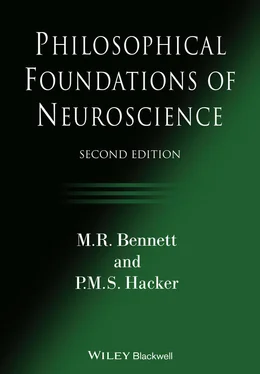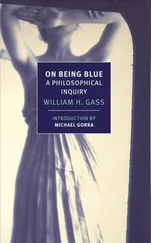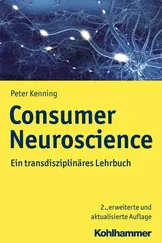1.6.1 The dependence of psychological capacities on thefunctioning of cortex: localization determined non-invasivelyby Ogawa and Sokolof
Neural activity in the cortex is reflected in vascular activity
Sherrington began his revolutionary research on the integrative action of the nervous system towards the end of the nineteenth century with an observation that was to have great impact on neuroscience research towards the end of the twentieth century. This was his discovery, with Charles Smart Roy (1854–1897), that there is an intrinsic ‘mechanism for controlling the cerebral circulation … by which the blood supply of various parts of the brain can be varied locally in accordance with local requirements’. 91They go on to say that ‘We conclude then, that the chemical products of cerebral metabolism contained in the lymph which baths the walls of the arteriole of the brain can cause variations of the calibre of the cerebral vessels: that in this reaction the brain possesses an intrinsic mechanism by which its vascular supply can be varied locally in correspondence with local variations of functional activity.’ 92This vascular supply provides glucose and oxygen to the brain, in which glucose acts as a source of carbon for oxidization, necessary for the energy required to sustain neuronal electrical activity. Roy and Sherrington had thus discovered that a principal determinant of this energy supply was the activity of the neurons themselves.
Vascular activity can be measured using BOLD brain imaging
Exactly 100 years after this discovery Seiji Ogawa (1934– ) and his colleagues showed that brain nuclear magnetic resonance (NMR) spectroscopy could be used to determine proton signals from water molecules surrounding blood vessels in the brain. As these signals change in the presence of deoxyhemoglobin in the blood they could be used to determine blood-oxygen-level dependency (BOLD) contrast, allowing blood vessels to be imaged non-invasively. 93As they state it, ‘the blood vessels in the image slice appear when the deoxyhemoglobin content in the red cells increases’; further that ‘the blood oxygen level development (BOLD) contrast follows blood oxygen changes induced by anesthetics … that alter metabolic demand of blood flow’. 94Following Roy and Sherrington’ s insights, this immediately suggested that the BOLD signal in a particular volume of the brain should vary in proportion to the neurons in that volume that had been activated more or less during the normal workings of the brain. Ogawa and his colleagues immediately put this to the test and showed that the BOLD signals in the primary visual cortex increase when a human is engaged in visual perception. 95So changes in local cerebral blood flow and oxygen consumption, indicating changes in metabolic responses, provide a non-invasive method of determining the local neural activity, through the use of what came to be known as functional magnetic resonance imaging (fMRI).
BOLD measurements during psychological tests
At the time of writing (2020) there are 556, 052 papers listed on PubMed that refer to this fMRI technique. These papers are overwhelmingly concerned with detection of BOLD changes in relation to various psychological tests presented to the subject whose head is in the MRI scanner. This procedure is carried out in order to determine the brain region engaged during the particular test, in the hope of providing a functional map of cortical areas supporting the psychological phenomena. It is of interest that Roy and Sherrington’ s comment that the ‘chemical products of cerebral metabolism contained in the lymph which baths the walls of the arteriole of the brain can cause variations of the calibre of the cerebral vessel’ (i.e. the mechanism by which changes in neuronal electrical activity produces changes in blood flow) has still not been elucidated in detail.
BOLD measurements in the absence of psychological tests
An exciting discovery made by Bharat Biswal and his colleagues in 1995 was that coupled BOLD signal variations between different areas of the brain could be detected when the subject was at rest in the scanner, that is when no psychological testing was taking place, indicating what they referred to as ‘manifesting a functional connectivity of the brain’ between these different areas using what is referred to as resting-state fMRI. 96Some of these areas showing ‘functional connectivity’ with resting-state fMRI were later shown to be connected by identified nerve tracts. Resting-state measurements have been utilized extensively in the past twenty-five years, with one of the discoveries due to Marcus Raichle and colleagues generating intense interest. 97They showed that when a subject in the scanner was lying quietly with eyes closed, particular areas of cortex displayed strong correlated activity, located in the posterior cingulate cortex, precuneus and medial prefrontal cortex; however these areas were depressed when the subject was engaged in goal-directed activity as in a psychological test. Raichle and his colleagues dubbed these areas as constituting a ‘default mode’ network. There has been much speculation concerning the purpose of this network, for example that it supports mind wandering. However this enthusiasm was dampened somewhat with the discovery that the network remains active not only during rest but also when the subject is anesthetized, that is unconsciousness. 98
Glucose consumption detected in the cortex as a measure of neuronal activity
Louis Sokoloff and his colleagues developed a method of introducing radiolabelled analogues of glucose [ 18F-2-deoxy-2-fluoro-D-glucose] at non-toxic levels into the brain so that the concentration of these analogues could serve as a quantitative measure of cerebral metabolism. 99The analogue could be ‘used as a tracer for the exchange of glucose between plasma and brain and its phosphorylation – local glucose consumption could be calculated’. 100This technique now uses positron emission tomography (PET) to determine non-invasively brain regions with high levels of glucose metabolism and therefore of neuron excitability. The technique of using radiolabeled analogues of glucose to measure metabolism was developed well before that of fMRI, and has the advantage of giving a quantitative absolute measure of metabolism compared with the relative measures of activity provided by the BOLD technique, however the latter can follow activity with much better temporal resolution.
1.6.2 Caveats concerning the use of fMRI to determine the areas of cortex involved in supporting psychological powers
The genius that was manifest in all of Sherrington’ s experiments was his capacity to elicit profound observations from relatively simple techniques, including that for establishing correlations between cortical blood flow in an area of the brain and the activity of the cortex in that area. When, a century later, Seiji Ogawa led the way in the use of a much more elaborate technique, namely fMRI, he too, like Sherrington, was careful not to ask that the technique deliver more on its own than it was capable. Unfortunately, this has not been the case with many of those following in his path in using fMRI. Here a number of potentially serious technical problems need to be mentioned that should put on guard readers of papers using fMRI that make various claims concerning cortical localization of functions supporting psychological powers. These caveats may be responsible for a significant lack of reproducibility in fMRI measurements. 101
The shapes of BOLD signals over the cortex of single subjects during a neuropsychological test
It has been traditional when analysing the fMRI signals to restrict such analyses to ‘box-car’-shaped signals, that is those which have a rectangular-like waveform that may be considered, for example, as a convolution of a gamma-variate function with a box-car function. The assumption that such signals are the only relevant ones has not been sustained by any analytical argument. It seems to have been based on spurious reasoning that those easily computed signal amplitudes seem to make sense. However, as has been emphasized by a number of recent studies, there is a wide variety of different shaped fMRI signals during simple neuropsychological tests, that is with different temporal profiles to that of the box-car like signals which occur over wide swathes of cortex (see Figure 1.1 and colour version, Plate 1, between pp. 232 and 233). 102It is clear that just measuring the ‘amplitude’ of such different temporal profiles is an inadequate way of characterizing and comparing them.
Читать дальше












